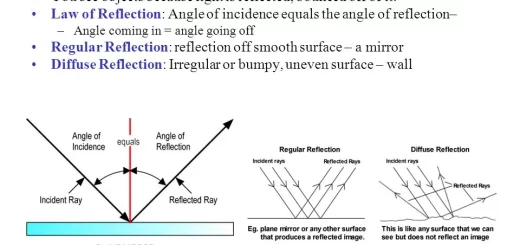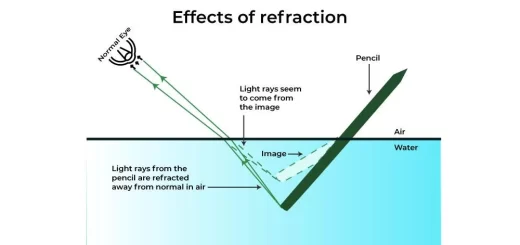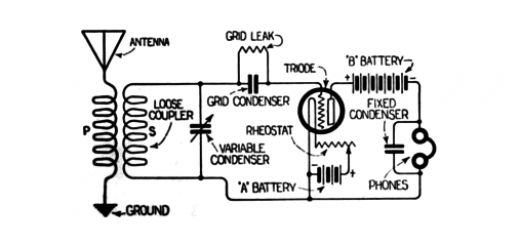Alternating current generator (Dynamo)-AC Generator and Effective value of the alternating current
Alternating current generator is a device that converts mechanical energy into electric energy, When the coil rotates between the two poles of the magnet, it intercepts the magnetic flux lines which generate the induced emf and induced electric current that can be transferred through wires for long distances.
Electric Generator (Dynamo)
Electric generator consists of a stationary magnet that may be a permanent magnet or electromagnet, An armature (a single loop of wire coil of many turns) suspended between the poles of the magnet, A pair of slip rings are connected one to each terminal of the coil and rotate with the coil in the magnetic field, Two graphite brushes each touch one of the two slip rings through which, the induced electric current flows to the external circuit (Dynamo poles).
Deduction of the induced instantaneous emf that generated in the coil of the dynamo
Electric generator is used to convert the mechanical energy into electric energy, When the loop rotates with a linear velocity (v) such that its two sides AB and CD intercept magnetic flux of density (B) and if the angle between the direction of the linear velocity and the flux lines is θ, then the induced emf generated in each of the two sides is emf = Blv sin θ.
Where: l = length of the sides AB and CD, But no induced emf is generated in any of the sides BC and AD such that they are always parallel to the direction of the magnetic field, thus emf in each turn becomes:
emf = 2 Blv sin θ , since: v = ω r
Where: (ω) is the angular velocity and equals (2πf), (f) is the frequency, (r) is the radius of the circle in which the coil rotates about its axis.
emf = 2 B l ω r sin θ
Since A (face area of the armature) = l × 2r
emf = BAω sin θ
When the number of turns of the coil is (N) then the instantaneous emf is
emf = NBAω sin θ
If the armature plane is perpendicular to the flux lines, then the perpendicular to the armature is parallel to the field (θ = 0°), emf = NBAω sin 0 = 0, emf vanishes.
If the armature plane is parallel to the flux lines, then the perpendicular to the armature is perpendicular to the field (θ = 90°), emf = NBAω sin 90 = NBAω, emf becomes maximum.
Thus, the emf changes from zero at θ = 0 to a positive maximum at θ = 90°.
The instantaneous induced emf can be determined in terms of ( emf )max:
emf = ( emf )max sin θ = NBAω sin θ = NBA×2πf sin θ (π= 22/7).
θ = ωt = 2πft , emf = ( emf )max sin 2πft (π=180° )
Factors affecting the instantaneous induced emf in the AC dynamo
- The number of turns of coil (N), (directly proportional).
- Armature face area (A), (directly proportional).
- Frequency (f) or angular velocity (ω) of the coil, directly proportional.
- Magnetic flux density (B) for the used magnet, (directly proportional).
- Since the angle between the perpendicular on the armature plate and the magnetic flux or sine the angle between the direction of the linear velocity and flux direction, (directly proportional).
Explaining the work of dynamo through a complete revolution:
- When the coil rotates between the poles of the magnet starting from the position where its plane is perpendicular to the magnetic flux lines (θ = 0°), emf = ( emf )max sin 0 = 0, Both of the induced emf and induced current vanishes.
- When the coil rotates and its plane becomes parallel to the magnetic flux lines (θ = 90°), emf = (emf)max and so is the induced current.
- Then the coil rotates and its plane becomes perpendicular to the magnetic flux lines again and the emf vanishes again.
- Step 2 and 3 are repeated thus the coil finishes one complete cycle, That can be represented by a sinusoidal curve.
The induced emf varies sinusoidally with the angle θ, where the maximum value at 90° and 270°, The induced emf vanishes at angles 0°, 180° & 360°.
I = 0 when emf = 0, I is a maximum value when emf is a maximum value, the induced electric current is directly proportional to the induced emf and consequently, the instantaneous induced current can be calculated from the relation:
I = Imax sin (2 π f t)
The generated electric current reverses its direction every half cycle and known as alternating current, The frequency of the alternating current is given by the relation:
F = Number of cycles/Total time
Periodic time (T) = 1 / Current frequency (f)
Frequency of the home current = 50 cycle/sec
The alternating current is the electric current that changes its intensity and direction periodically with time from zero to a maximum value, then returns to zero in a half cycle, then reverses its direction and increases to maximum value then to zero in the second half cycle and this is repeated each cycle.
Deduction of the average induced emf in a coil (emf)ave
emf = − N ( ΔΦm/Δt )
Within ¼ cycle : Δt = T/4 = 1/4f , ΔΦm = BA , ( emf )ave = − NBA× 4f
Within ½ cycle : Δt = T/2 = 1/2f , ΔΦm = BA−(−BA ) = 2 BA , ( emf )ave = − NBA× 4f
∴ The average emf within ¼ cycle = The average emf within ½ cycle
Average emf within a complete cycle = zero because the emf direction in the first half of the cycle is opposite to its direction in the second half of the cycle.
Effective value of the alternating current
The AC current value changes from ( + Imax ) to ( − Imax ), thus the average value of an AC current equals zero (Iave= zero).
Nevertheless, the electric energy is consumed as thermal energy due to the motion of electric charge and the rate of the consumed electric energy is proportional to the square of the intensity of the current.
The best method for measuring the effective value of the intensity of the alternating current is to find the value of the direct current which generates the same rate of thermal effect in a resistance (or the same power) as that generated by the considered AC current and this effective value of the AC current (Ieff) equals 0.707 of the maximum current.
Ieff = 0.707 Imax
Also the effective value of the electromotive force:
(emf)eff = 0.707 (emf)max
The effective value of the alternating current is the value of the direct current which generates the same thermal effect in a resistance as that generated by the considered AC current in the same resistance and within the same period of time, or it is DC current which generates the same electric power as that generated by AC current in the same resistance.
When the effective value of AC current intensity in a circuit = 10 A, It means that the direct current intensity that generates the same thermal power produced by the alternating current in the same resistance and within the same time interval = 10 A.
Electric current rectification in the dynamo
Current rectification means converting the alternating current into a unidirectional current or direct current that has one direction and almost constant value, Many electrical processes, such as the production of some metals require direct current, For this purpose, an AC generator may be converted into DC generator.
Current rectification is the conversion of the alternating current into a direct current that has one direction and almost constant value, Current rectification may produce either:
- Unidirectional electric current with variable intensity.
- Unidirectional electric current with almost constant intensity.
To obtain unidirectional electric current with variable intensity
Usage: preparation of some metals from their compounds by electrolysis.
Structure:
- The two metallic rings in the AC dynamo are replaced by a commutator that consists of a hollow metallic cylinder split into two halves (1, 2) well isolated from each other.
- Two brushes F1 and F2 touch the two halves (1, 2) during the rotation of the coil, The external circuit is connected to the two brushes F1 and F2.
- The two brushes F1 and F2 must touch the insulator between the two halves at the moment when the plane of the coil is perpendicular to the magnetic field, at the instant when the generated electromotive force in the coil is zero.
How it works:
Let us consider that the coil starts rotation in the direction, during the first half cycle, brush F1 touches the cylinder half (I), while brush F2 touches the other half (2) of the cylinder, The current in such a case will pass in the coil in the direction WXYZ, As a result, the current passes in the external circuit in the direction from F1 to F2 during the first half of the cycle.
In the second half of the cycle, the electric current reverses its direction in the coil, the current passes in the coil in the direction ZYXW, At the same time, brush F1 will be in contact with the half (2), while F2 will be in contact with the half (1), the two halves of the commutator reverse their position relative to the two brushes, In such a case, the current in the external circuit passes from F1 to F2, which is the same direction as that in the first half of the cycle.
Continuing the rotation, the brush F1 acts as a positive pole, while F2 acts as the negative pole of the dynamo, Accordingly, the current and the induced emf in the external circuit will be always in one direction but its value changes from zero up to a maximum value, then decreases again to zero during each half cycle of the coil rotation, but it is always in one direction.
To obtain a uni-directional current of approximately constant value
Usage: Electroplating and charging of electric accumulators.
Structure: Many coils separated by small angles are used, A hollow metallic cylinder is used which is split into a number of segments, double the number of coils, thus, the current in the external circuit is almost constant, this is the way to obtain a DC generator.
AC current
Ac current is obtained by using AC dynamo, AC current changes its intensity and its direction periodically and uniformly, It can be transported for long distances without big losses in energy using the electric transformer, It can be transformed for long distances without energy loss by raising its voltage to a high value using transformers, It can be converted into DC current, AC current is used in lighting and heating.
DC current
DC current is obtained by using DC dynamo, electric cells or electric accumulators, DC current is constant in direction and intensity, It can’t be transported for long distances due to the very big loss in energy in the form of heat in the wires, It can’t be transferred for long distances as it losses a lot of its energy in the form of thermal energy, It can’t be converted into AC current, DC current is used in lighting, heating, electroplating and charging accumulators electrolysis and mobile charger.
Types of electric current, Direct & Alternating electric current, Series & parallel connection
Mutual induction between two coils & applications of the self-induction of a coil
Electric transformer uses, structure, efficiency & How it works



